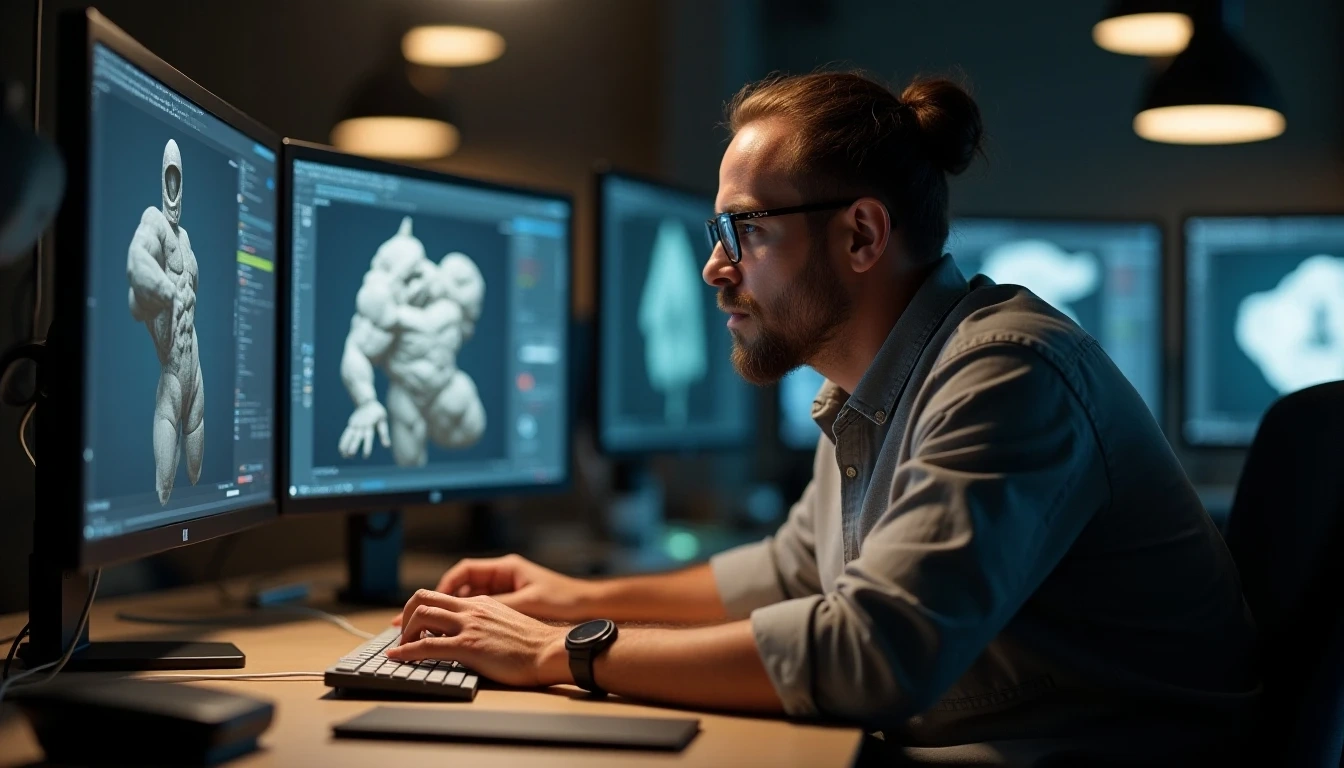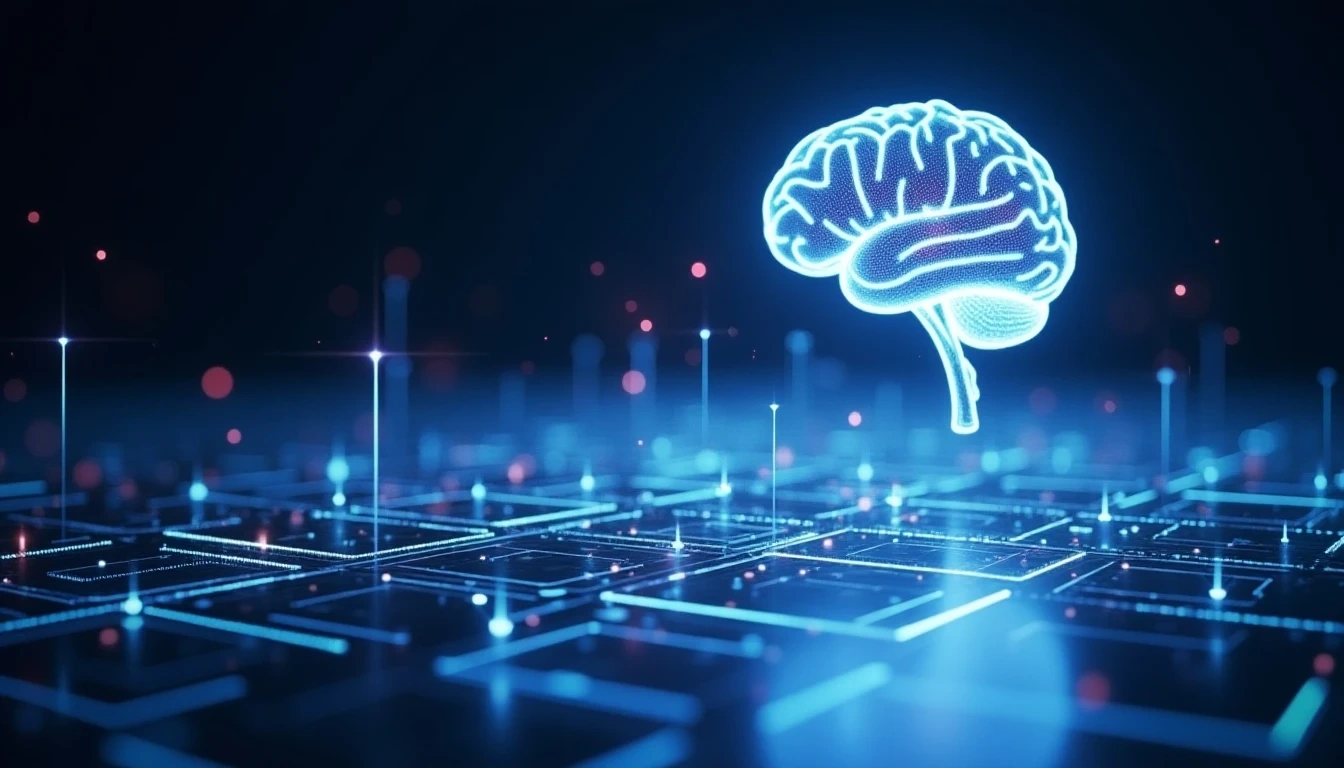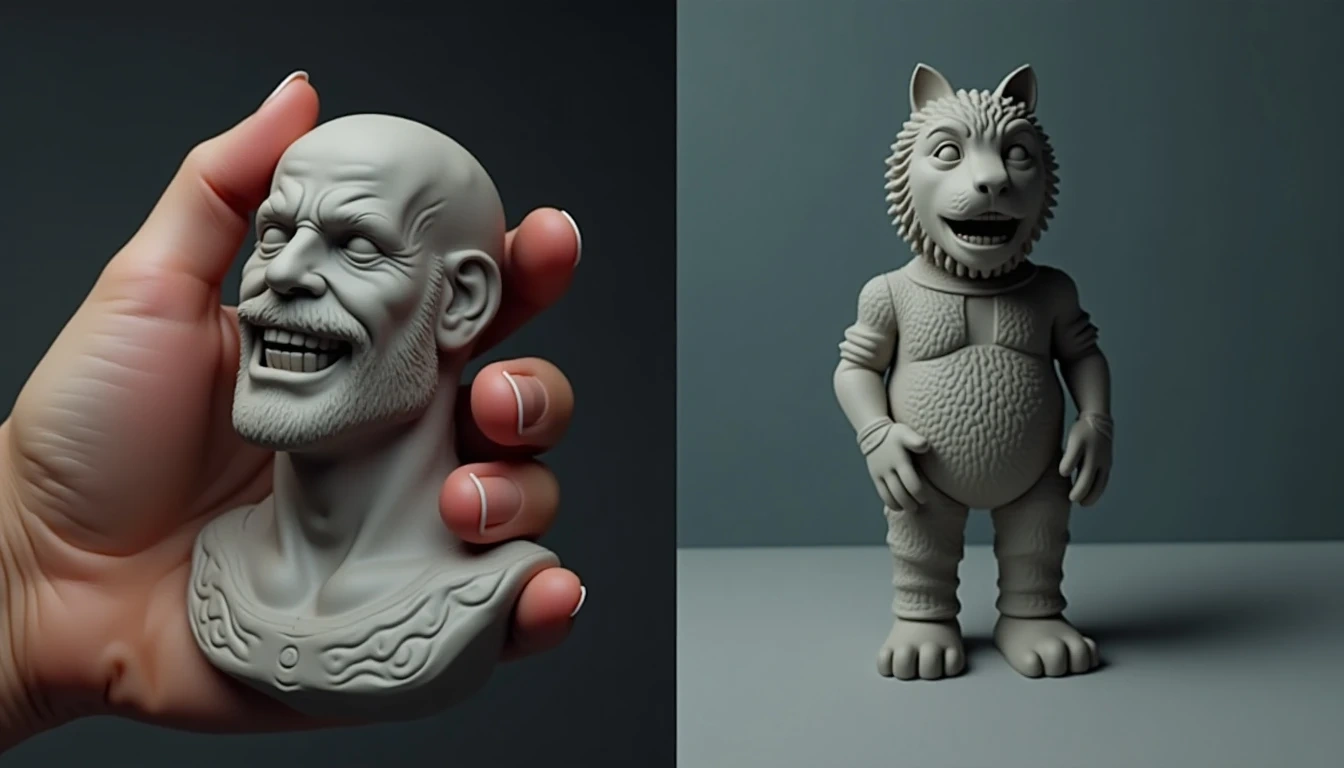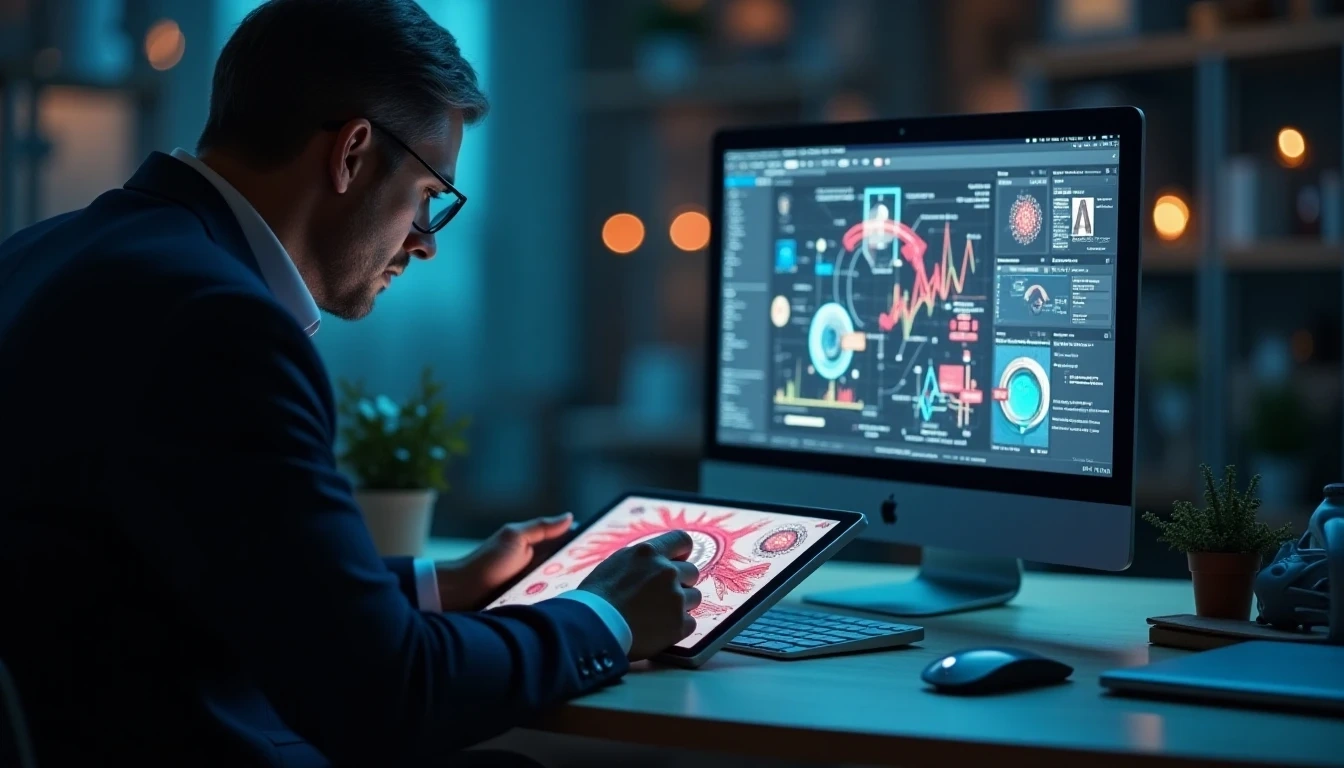AI 3D Modeling vs Traditional 3D Modeling: Comprehensive 2025 Analysis
The 3D modeling field is experiencing a revolution. On one side stands traditional 3D modeling technology, developed over decades; on the other, rapidly emerging AI 3D modeling. For designers, developers, and creators, choosing between these approaches has become a crucial decision. Today we'll analyze the strengths and weaknesses of both modeling methods to help you make the best choice.
Traditional 3D Modeling: The Embodiment of Craftsmanship
Traditional 3D modeling relies on designers' skills and experience, using professional software like Maya, Blender, and 3ds Max to hand-craft every detail. This approach resembles a sculptor chiseling marble—requiring deep expertise and substantial time investment.
Core Advantages of Traditional Modeling

Absolute Control represents traditional modeling's greatest strength. Designers can precisely control every vertex, edge, and face position. Need to adjust a detail? No problem—direct editing provides the solution. This precise control keeps traditional modeling dominant in film VFX, high-end gaming, and professional product design.
Unlimited Creative Space makes traditional modeling full of possibilities. If you can imagine it, you can model it. Complex mechanical structures, refined character expressions, unique artistic styles—these remain traditional modeling's forte.
Professional-Grade Quality defines traditional modeling's hallmark. Experienced modelers create breathtaking works, whether the alien creatures in "Avatar" or mechanical devices in "Cyberpunk 2077," all showcasing traditional modeling's ultimate standards.
Challenges Facing Traditional Modeling
Time cost presents the biggest pain point. A complex character model might require weeks or even months to complete. Learning costs are equally substantial—mastering professional modeling software typically takes years.
Human resource costs are also high. Professional 3D modelers command significant salaries, often exceeding budgets for small teams or individual creators.
AI 3D Modeling: The Smart Era's New Choice
AI 3D modeling uses machine learning algorithms to enable computers to understand text descriptions or image content, automatically generating corresponding 3D models. It's like having a tireless assistant ready to transform your ideas into reality.
AI Modeling's Outstanding Advantages
Speed Revolution characterizes AI modeling's most significant feature. Platforms like Open3D.art can generate complete 3D models within 30 seconds—a speed traditional modeling cannot match. For projects requiring rapid prototyping or bulk generation of similar models, this speed advantage is transformative.
Zero-Barrier Usage enables everyone to become 3D creators. No need to learn complex software operations or master modeling techniques—simply typing or photographing can generate 3D models. This convenience is democratizing 3D creation.
Significant Cost-Effectiveness, particularly for budget-limited users. Completely free platforms like Open3D.art enable individual creators and small teams to access professional-grade 3D resources.
AI Modeling's Development Bottlenecks
Control precision remains limited. While AI can generate quality models, precisely controlling specific details proves challenging. If you need to adjust a small model section, you might need to regenerate the entire model.
Creative boundaries are influenced by training data. AI can only generate variants of things it has "seen"—completely original, unprecedented designs remain AI's weakness.

Real-World Application Scenario Comparisons
Game Development Field
Independent Game Development showcases AI modeling's tremendous advantages. Single-person teams can rapidly generate numerous game assets through AI, from environmental props to character models. While post-processing may be required, this efficiency improvement is revolutionary.
AAA Games still rely on traditional modeling. Complex character animations, refined facial expressions, and unique artistic styles require professional modelers' meticulous craftsmanship. However, AI can serve as an auxiliary tool, helping generate background props or initial concepts.
Architectural Visualization
Conceptual Design Phase: AI modeling excellently suits rapid generation of furniture, decorative elements, and auxiliary components. Architects can focus on main structural design while letting AI handle standardized objects.
Final Presentation still requires traditional modeling's precision. Client presentations and construction drawings demand extreme accuracy, where traditional modeling's precise control remains irreplaceable.
3D Printing Applications
AI-generated models work directly for prototyping and creative design. However, for functional parts requiring precise fitting, traditional modeling's precision control remains more reliable.
Learning Path Recommendations
Beginner Entry
If you're new to 3D modeling, we recommend starting with AI modeling. Experience 3D creation's joy on platforms like Open3D.art, understand basic concepts, then decide whether to pursue traditional modeling based on your needs.
Professional Development
For those pursuing 3D-related careers, traditional modeling skills remain essential. However, understanding AI tools is equally important—they'll become crucial components of future workflows.
Workflow Integration

Best practices often combine both approaches. Many professional teams are adopting hybrid workflows like this:
- Concept Phase: Use AI to rapidly generate multiple design options
- Option Selection: Perform traditional modeling optimization based on AI-generated results
- Detail Refinement: Add specific details and adjustments through traditional techniques
- Final Rendering: Combine advantages from both approaches
Technology Development Trends
AI modeling technology advances rapidly. Higher generation quality, better controllability, and richer style options—these improvements are narrowing the gap with traditional modeling.
Traditional modeling is also embracing AI technology. Many professional software packages are integrating AI features like automatic UV unwrapping, intelligent retopology, and AI material generation.
Cost-Benefit Analysis
From an economic perspective, AI modeling offers clear advantages in bulk generation and rapid prototyping. If a project needs 100 different prop models, AI might complete them in hours, while traditional methods require months.
However, for highly customized projects, traditional modeling remains more cost-effective. After all, repeatedly adjusting AI generation results might cost more time than direct modeling.
Future Outlook
AI and traditional modeling aren't replacement relationships—they're complementary. Just as digital cameras haven't completely replaced film cameras, both technologies have their applicable scenarios.
Future 3D creators need to master both skills: knowing when to use AI's efficiency and when traditional modeling's precision is necessary.
How to Choose Your Approach
When selecting modeling methods, consider these questions:
Project Requirements: Do you need extremely high precision and customization?

Time Budget: Is the project timeline tight? Skill Level: Do you have traditional modeling foundations? Cost Budget: Do you have sufficient budget to hire professional modelers?
If you prioritize speed and cost-effectiveness, AI modeling is the ideal choice. If you need perfect control and unique creativity, traditional modeling remains irreplaceable.
The smartest approach is trying both. Experience AI modeling's convenience on Open3D.art while learning traditional skills through open-source software like Blender. This way, you can choose the most suitable tools based on specific project requirements.
The future of 3D modeling is diverse—mastering more tools means more possibilities. Regardless of which approach you choose, the key is taking action and transforming ideas into reality.
